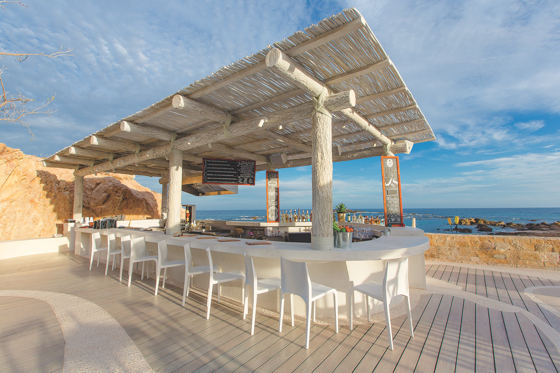The Auberge Resorts Collection’s newly opened property in Los Cabos, Mexico, Chileno Bay Resort & Residences, is punctuated by its taco bar on the beach, TnT. The atmosphere is no shoes allowed, rough and ready, sincere with great tacos and chilled beer. It also serves as the perfect reflection of where Auberge is going with its modern luxury brand – one more about creature comforts than silver and chandeliers, according to CEO Craig Reid, who joined the group in late 2013 after a career with Four Seasons Hotels & Resorts that spanned over three decades.
“That’s what the customer is looking for,” Reid says of the Auberge approach, which today pushes even further the envelope of risk. “It’s whimsical, it’s energetic, it’s vibrant, and it is a very different delivery of luxury.”
But traditionally, more casualness could have meant less ability to drive rate and revenue. Reid responds by saying the market for this type of product is huge and demand will drive the pricing. “We believe Chileno Bay will have very high pricing because there is a huge constituency that would be much more comfortable there than at some of the other more formal, more traditional luxury properties in Cabos,” he says, adding that he thinks room rates will be higher based on that root demand.

Three more Auberge properties are under development, and while every development is managed case by case, many will likely take a similar tact to Chileno Bay. Auberge Beach Residences in Fort Lauderdale, Florida, is coming online this year, with Stanly Ranch Napa Valley in California and Auberge Resorts Sun Valley in Idaho scheduled to come online in 2019. “We’ll be announcing another project soon, an urban setting in Texas, where again the flavor really speaks to deformalized luxury – but it truly is luxury,” Reid adds.
In addition to the more casual element that defines modern luxury, Reid says scale is the other key ingredient. “We want to create intimate settings, and by virtue of the scale we have the advantage of touch,” he says, referring to how receptionists, almost by default, get to know every customer because of the limited room count. “A lot of the boutique brands and these new modern luxury brands have understood that and are ensuring that the hotels are not too big to manage the service experience.”

To make sure Auberge was traveling the proper path, Reid did informal research on resort unit growth (not room growth) of the top 10 luxury brands over the past three years and found Auberge and a couple of others were outpacing the traditional luxury in terms of new units. “Quite frankly, the results caught me by surprise, but often when you quantify it helps you really measure a trend,” he says.

